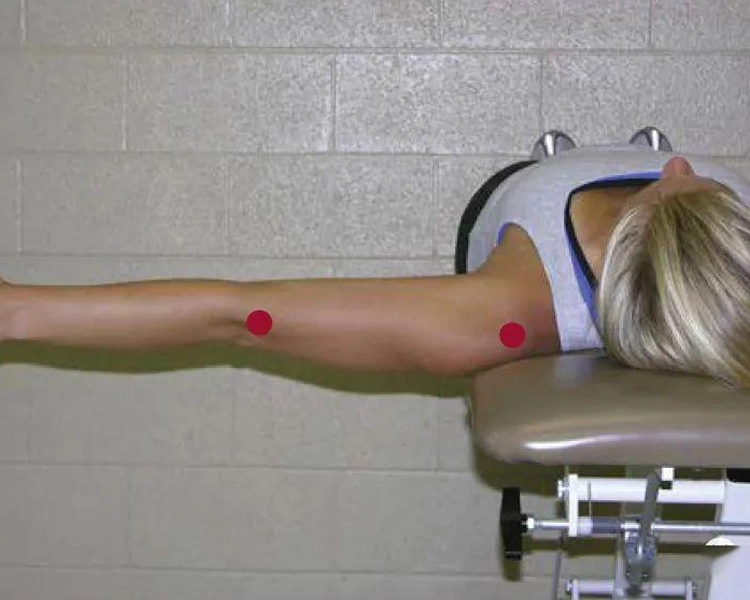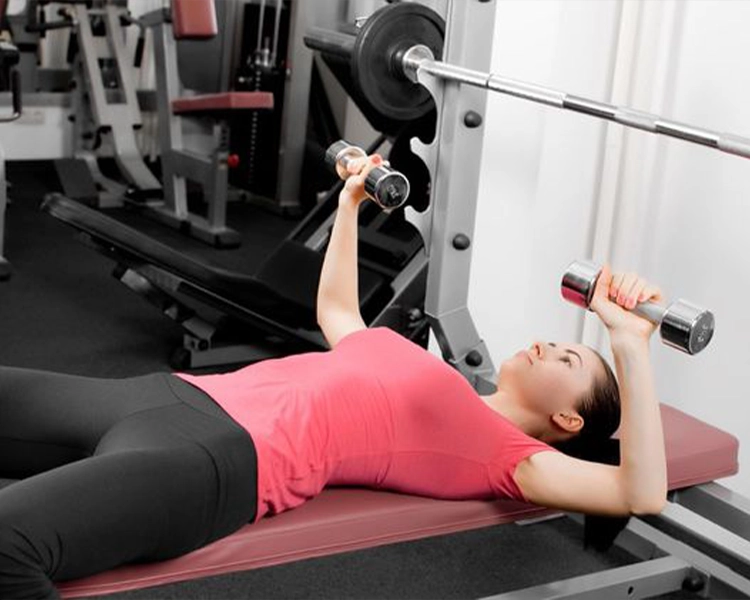why do i only feel my delts in chest exercises
Regardless of whether you are a man or a woman, the goal of chest training is to have a large circumference and a good shape (I emphasize again that women can improve the firmness and shape of their chest through chest training, making their chest more upright.). This undoubtedly requires high attention to chest muscle training.
However, beginners often encounter such a problem when they start fitness training – in chest training, they cannot find the feeling of chest muscle recruitment, and often feel that the arms are exerting force, because it also involves triceps, deltoids, etc., so when practicing chest bench press, they find that their arms are sore, but their chests seem to have no feeling at all. In the long run, not only did they not practice the chest they wanted to practice, but their arms became thicker (and the shape may not be good-looking). How do we solve this problem at the beginning? Today I will tell you the basic principles of chest training.

We can see that the chest muscles are actually connected to the upper arms. To a certain extent, the role of muscles is to move the bones and joints between the bones they connect.
Therefore, one of the most important points in practicing chest muscles is to move the upper arms, clamp them inward, and move the shoulder joints horizontally inward!

Think about how many people use the bench press posture in daily chest muscle training, and mistakenly focus on straightening the elbow joint.

But elbow straightening is not the root cause of the error. It is elbow straightening that causes the shoulder girdle to move up and the joint to hyperextend. The elbow joint can be straightened! This will make the chest contract more! The premise is that the shoulder girdle is fine! The elbow hyperextension is not serious. In this sentence, the focus of chest training is on the adduction of the upper arm and the movement of the shoulder joint, while maintaining moderate extension of the elbow joint to maximize the activation of the chest muscle. So we have to limit the movement of the forearm, focus on the adduction of the upper arm, and imagine the contraction of the chest. We must first use some isolated chest training methods to first train the strength of the chest muscles and the feeling of training. For example, cable chest clamp, dumbbell bench press, etc.
Next, we will solve the problem.
Insufficient arm and shoulder strength
The problem to be solved is to reduce the weight, don’t blindly pursue weight.
Inadequate movement
The target muscle does not exert force, and there is no squeeze at the peak of the movement. This is the fundamental reason why many people have been training for a long time but can’t get results.
Leverage is a problem that all beginners will encounter. The part that leverages will directly or indirectly participate in the force generation process, making an action that should be completed by one part of the muscle become a multi-participation at the same time, resulting in insufficient stimulation and easy early fatigue.
Suggestions for chest muscle training
A. It is recommended to use a small weight to find the feeling
Because when the weight is small, your consciousness will focus on the accuracy of the action, then the standard of the action will be much higher. On the contrary, if a large weight is used, you will only think about how to push up these weights by any means.

B. Combination of large and small weights
As mentioned earlier, if the weight is too much pursued, the accuracy of the action will inevitably decrease, then the deltoids and triceps will participate more, and the chest muscles will participate less, so good results will not be achieved, so it is recommended to use a small weight in the middle to do it several times, which will have a good effect.

Tips: Blindly pursuing weight is actually unrealistic. Sometimes the action is more important than the weight, because only when the action is in place can the target muscle be fully stimulated and the weight can be continuously increased.
C. Fast up and slow down
Many people do bench presses slowly up and slow down, with their chests contracted. This is not to say that this method is wrong, but it is not effective in stimulating the chest. The triceps bear most of the weight when doing slow up and slow down, resulting in insufficient stimulation of the chest muscles. Although slow motion can lift more weight, the training intensity shared by the pectoralis major is significantly reduced.
When going up, overcome gravity faster, increase the load on the chest muscles, control breathing and don’t lose your breath, keep the chest muscles tightened at the top, and go down slowly to fully stretch the chest muscles.
D. Concentrate on the mind when training the chest
Concentration is very important, which is a bit vague, but it does make sense. When training, imagine that you are using your chest to concentrate all your blood in the chest, just like a sexual fantasy, concentrate on the chest muscles! Feel its contraction and movement.

E. Improve the strength of auxiliary muscles
By strengthening the training of the arms and shoulders, you can reduce the situation of borrowing power in chest training, and thus better concentrate on stimulating the chest muscles.
F. Do not lock your joints.
Locking your elbow joints will allow your triceps to participate more in the force, and locking your shoulder joints will affect the participation of your deltoids. Neither of them stimulates the pectoral muscles in isolation. At the same time, locking your joints also means that you give up the opportunity for isometric contraction when you stop. Heavy weights will also put a lot of pressure on your joints. Leading to injuries or strains.

G. Sink your shoulders and squeeze your chest.
If you don’t sink your shoulders, you use the anterior deltoids. If you don’t squeeze your chest, you use your triceps.
H. Multiple angles, up and down.
Although the upper and lower ends of the pectoral muscles are determined by overhead exercise training. However, the fullness of the upper and lower parts of the pectoral muscles still requires up and down dumbbell bench presses, and zipper bench presses that frequently change angles.
I. Stretching
Stretching can expand the fascia when it is congested. Promote muscle growth. But pay attention to using static stretching before training and dynamic stretching after training.
J. Eat more, drink more, and sleep more.
Because pectoral muscle training is for dimension and strength. So you must keep up with eating and drinking to ensure super recovery. Within two hours after training, please eat twice your body weight in grams of sugar and about your body weight in grams of protein (for example, if you are 70 kg, you should eat about 140g of sugar, about a bottle of 1.5 liters of Pulse, and then add 70g of protein). This is very important. You don’t grow muscles during training. Training is just an opportunity. The real muscle growth stage is to use what you eat during rest to rebuild the muscles and make them bigger, bigger and stronger.

